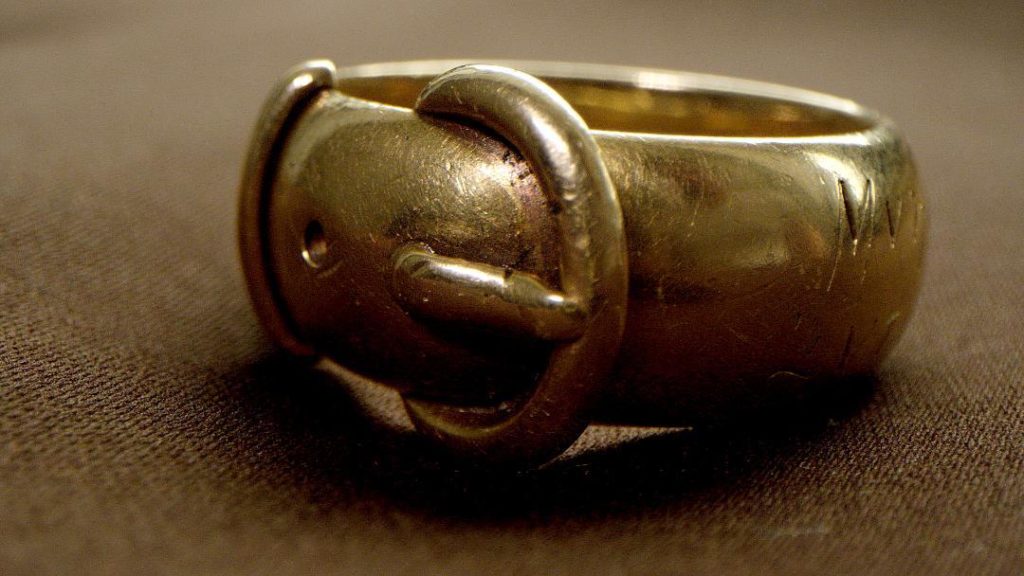Art World
The Art World’s Indiana Jones Tracked Down a Twice-Stolen Ring Once Owned by Oscar Wilde. He Tells Us How He Did It.
This tangled tale involves a quartet of elderly gangsters and a custodian-turned-jewelry-thief.

This tangled tale involves a quartet of elderly gangsters and a custodian-turned-jewelry-thief.

Brian Boucher

Dutch art detective Arthur Brand, widely called the Indiana Jones of the art world, has tracked down and returned to Oxford University an 18-carat gold friendship ring that the legendary Irish author Oscar Wilde gave to a fellow Magdalen College student in 1876. Brand had been on the lookout for the missing item, so when rumors started to circulate that a Victorian-era ring in the distinctive shape of a belt and a buckle, supposedly bearing a Russian inscription, had surfaced on the black market, Brand suspected that it was the Wilde jewelry.
The labyrinthine tale that led to the ring’s restoration begins in 2002, when a former college cleaner, Eamonn Andrews, broke into Magdalen and pilfered the ring. While he was later busted for the theft, the ring itself wasn’t recovered; he claimed to have sold it to a scrap dealer for £150, leading to worries that it had been melted down. “We had given up hope of seeing it again,” Mark Blandford-Baker, home bursar of Magdalen College, told AFP. Its value was estimated at £35,000 at the time. (Blandford-Baker shot down one report that had Andrews getting drunk on the college’s own whiskey before stealing the Wilde ring. “There is no evidence for that,” he told Artnet News via email.)
Things took a far more dramatic turn in 2015, when four thieves, ranging from 58 to 76 years old and all veterans in their craft, pulled off the notorious Hatton Garden jewelry heist—the largest jewelry theft in English history, which saw some £200 million go missing from a safe deposit facility in the Hatton Garden district of London. The thieves were such a colorful cast of characters that the job was memorialized in a feature film; one of them was supposedly in the habit of wearing his mother’s dressing gown, along with a fez. It was supposed to be their final heist, after which they would retire.

Arthur Brand.
“It’s always ‘the last big job,’” Brand told Artnet News in a phone interview. “One of them had to shoot insulin in his arm every hour during the heist, and one of them was so old he fell asleep on the job.” Another of the four robbers was busted when police were able to detect his movements on the night of the theft—because he used his reduced-rate transit card to get to the crime scene, says Brand.
But a year after they struck it rich with the long-planned robbery, the authorities finally tracked the four thieves down, and all were sent to prison. Since word reached Brand that the Wilde ring had come back on the market shortly after the Hatton Garden theft, Brand suspects that it had made its way to one of the 73 Hatton Garden safe deposit boxes the thieves emptied out.
When Brand heard of the existence of the distinctively shaped ring, complete with an inscription on its inside (“Gift of love, to one who wishes love”), he put two and two together.
“I know people who have done these heists,” he said. “You have no idea of the pieces you can find in safe deposit boxes, including hot items.” Brand, determined to find the ring’s new owner, worked together with William Veres, a London-based antiques dealer, and George Crump, whom Brand characterizes as being knowledgeable of London crime circuits. “So, in 2015 there were rumors about the ring and about a lot of items that had been stolen before, and of course no one is going to report those things to the police. So we sent someone out there to investigate the aftermath of the heist, and that’s how we got to the person who bought the ring.”
That was a crucial moment, says Brand. The new owner was aghast to find that they were in possession of such a storied treasure.
“We were afraid that this person would panic and dispose of it or melt it down,” he said. “They are not to blame, but if you are not to blame you better not get rid of it, because then you are to blame!”
The new owner didn’t destroy the ring in an attempt to cover their tracks. Instead, they happily gave it to Brand, who, in what he deemed a classic bit of English humor, restored the ring to a representative of the college at Hatton Garden—exactly the spot where it had been stolen for the second time, four years ago.